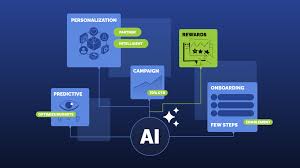In 2025, running a local business is harder than ever — competition is tighter, customers expect more, and every minute counts. That’s why automation isn’t just for tech companies anymore. For small businesses, service providers, and independent professionals, automation is now a critical lever for growth.
Whether it’s managing inventory, scheduling posts, or improving customer communication, smart automation gives local brands a real edge. This guide covers actionable local brand tips, tools, and real-world strategies that drive results — without losing the human touch that makes local brands special.
Why Local Businesses Can’t Ignore Automation Anymore
If you’re still juggling DMs, late-night invoicing, and hand-posting on every social platform — you’re burning out and falling behind.
Here’s what automation offers:
- ✅ Efficiency: Automate the repetitive so you can focus on what matters
- ✅ Consistency: Show up across platforms without daily micromanagement
- ✅ Scalability: Grow without needing to double your headcount
This isn’t about replacing people. It’s about amplifying output and making your team smarter and faster — even if it’s just you.
Local Brand Tips: What to Automate First
1. Social Media Scheduling
Planning posts across platforms manually? That’s a time sink.
Use tools like Buffer, Metricool, or Later to:
- Pre-schedule content
- Maintain a consistent brand voice
- Review engagement insights
A strategic content calendar beats scrambling daily. It’s not just a hack — it’s a system.
2. Customer Communication
Set up automated DMs, appointment reminders, or post-purchase follow-ups.
Even a basic chatbot can handle FAQs, free up time, and build trust through responsiveness.
3. Email Campaigns
Use automation to:
- Send welcome sequences
- Trigger seasonal offers
- Re-engage lapsed customers
This is one of the highest ROI moves — and often the most ignored by local businesses.
4. Inventory & Order Management
Automated stock alerts and order routing prevent human errors and save revenue.
No more selling out of bestsellers or double-booking services.
5. Billing & Payment Automation
Invoicing platforms like Wave or FreshBooks can:
- Auto-send invoices
- Schedule reminders
- Collect payments faster
Clean books = clean growth.
Staying Ahead of Trends in Local Automation
What worked in 2022 won’t cut it in 2025. Smart local brands stay tapped into real trends, like:
- 📊 Predictive Analytics: Know what customers want before they do
- 🤖 Hyper-Personalization: Custom promos based on user behavior
- 🗣️ Voice Search Optimization: Be discoverable via Alexa/Siri/local intent
- 💬 Omnichannel Response Tools: Sync replies across SMS, WhatsApp, IG, FB
- 🌱 Eco-Automation: Tools that cut waste and boost sustainability
Top-performing businesses are blending strategy with real-time trend insights, not just gut feeling — something echoed across industry analysis on automation and growth.
How Automation Impacts Professional Development Too
This isn’t just about the business — it’s about your career trajectory as a local operator or marketing professional.
- 💼 Upskilling: Automation knowledge = digital fluency = higher value
- 🚀 Leadership Growth: Automators become organizers. Organizers get promoted.
- 🧠 Better Team Culture: Free your staff from grunt work → empower creative problem solving
As automation reshapes operations, those who implement it become indispensable.
Avoiding Common Automation Pitfalls
Automation isn’t magic. Use it wrong, and it backfires.
Watch out for:
- ❌ Over-Automation: Customers still want a human touch
- ❌ High Tool Costs: Don’t pay enterprise prices for startup tools
- ❌ Integration Messes: Choose platforms that play nice with your stack
- ❌ Lack of Training: Automation is useless if staff don’t use it
Balance is key: automate the process, not the personality.
Case Study: A Local Coffee Shop That Scaled with Automation
A New Jersey coffee shop struggled with:
- High customer wait times
- No-shows for pre-orders
- Manual social media
They introduced:
- A chatbot for IG & Messenger pre-orders
- Email automation for promos and loyalty
- Inventory tracking for top-selling drinks
📈 Result?
- 30% reduction in order errors
- +22% in repeat customers
- 10 staff-hours saved weekly
They didn’t lose their “local charm” — they amplified it through automation.
What the Future Holds for Local Automation
The next wave of local business automation is already forming. Here’s what’s coming:
- 💡 AI-Powered Campaign Builders: Create marketing flows in minutes
- 🔄 All-in-One Ecosystems: Run socials, CRM, payments, and bookings from one hub
- 🏘️ Local-Specific Platforms: Hyper-local tools for mom-and-pop scalability
- 🧠 Predictive Campaign Tools: Platforms that suggest what to promote based on local weather, holidays, or historical data
Local brands that adopt these early will build a moat around their operations and reputation.
And it’s not just theory — current independent coverage shows how smaller businesses using these platforms are seeing exponential, not incremental, returns (source).
How to Start: Smart Local Automation Setup
- Pick One Area to Automate First (e.g. scheduling or payments)
- Set a 30-Day Testing Period with measurable KPIs
- Review Weekly Metrics — optimize early
- Train Staff or Partners — don’t assume they’ll “figure it out”
- Scale What Works — automate second, third, and fourth workflows
Final Word: Automation = Local Brand Advantage
The myth that automation is only for big brands is dead.
In 2025, local businesses who don’t automate will be outpaced by those who do — not because they’re less skilled, but because they’re less efficient.
By embracing modern local brand tips, tracking actual automation trends, and blending tech with authenticity, small brands can scale like giants — without losing what makes them local.
Automation isn’t about replacing your hands. It’s about freeing them up to do better work.




